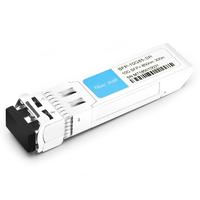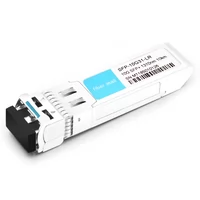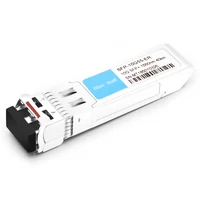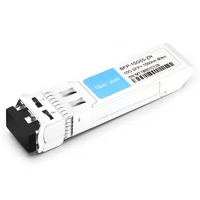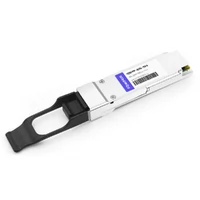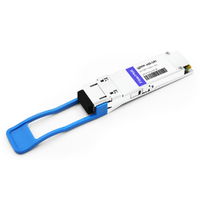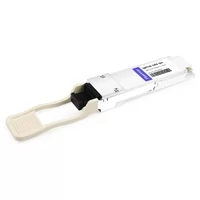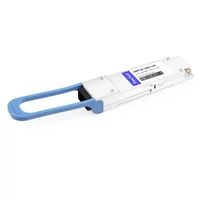Managed and unmanaged network switches differ in various aspects, including controllers and cost. Compared with the unmanaged switch, the managed switch has more functions but it requires personnel with professional knowledge to control it. A managed switch can better manage the network and frame traffic that passes through it. Unmanaged switches, on the other hand, have the primary function of providing connecting devices to communicate with each other.
Table of Contents
ToggleWhat is a managed switch?
Managed switches allow users to log in to the switch to adjust and set parameters, to manage, configure, and supervise the network in various ways. They can also better control how data is transferred and who can access it. Managed switches usually provide SNMP protocol (Simple Network Management Protocol), which enables users to start monitoring of the switch and the status of each port, and can also provide statistics such as traffic throughput, network error information, and port status.
Over time, network administrators can track and use this data to troubleshoot and observe network capacity. Ports of managed switches can be configured in trunk mode, which is a process where data is tagged with VLAN and multiple VLAN frames are transmitted through a link.
The trunk port is used for the link between two switches or the VM servers that connect multiple VLANs. Network administrators can continue virtual aggregation of multiple ports to form bundled links that provide higher speeds at double, quadruple, and eight times the original. Finally, managed switches provide remote access, through the command line or web interface, and administrators can access from different physical locations to change the configuration or adjust parameters.
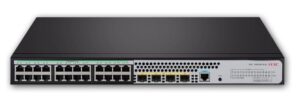
A managed switch
What is an unmanaged switch?
Ports of unmanaged switches use auto-negotiation to determine the data rate and half or full duplex. In addition, unmanaged switches do not support VLAN technology because all ports belong to the same broadcast domain.
However, unmanaged switches include a MAC address table to record dynamically learned MAC addresses and corresponding ports. With the MAC table, unmanaged switches provide collision domains that isolate each port. Collision domains occur when two devices within the same domain send data. After a conflict occurs, the switch will discard the two packets, and the devices on both sides will be forced to re-transmit. The collision domain is the boundary of the Layer 2 network. The device sends a broadcast frame, which can be received by all devices in the network segment.
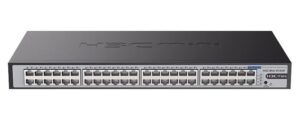
An unmanaged switch
Critical Differences Between Managed and Unmanaged Switches
The main difference between managed switches and unmanaged switches lies in the way they are managed. For managed switches, network administrators can control and manage LAN traffic priority more flexibly. However, an unmanaged switch works more like a plug-and-play switch, enabling mutual communication between LANs without user intervention.
The following will help you better understand other key differences between managed and unmanaged switches:
- Free configuration:
Managed switches allow users to manage, configure and monitor the LAN. They allow users to create new LANs and isolate smaller devices and help users manage traffic efficiently. Managed network switches have advanced features such as allowing users to recover data in the event of a device or network failure. They also allow data recovery.
Unmanaged switches are easy to use, but they have a fixed configuration, which means you can’t change the network. This is why it is most commonly used in startups with limited data exchange.
- Performance management:
Unmanaged switches are plug-and-play switches. They have built-in QoS services, ensuring that they are easy to set up and use. However, managed switches allow you to manage performance through priority channels. They utilize protocols such as Simple Network Management Protocol (SNMP) to monitor the performance of all devices connected to the LAN on Ethernet.
Managed switches also use SNMP to analyze the current performance of devices on the network through an understandable graphical interface. Additionally, SNMP supports remote management of connected devices and networks without physical intervention on the switch.
- Security function:
Unmanaged switches have basic security features, such as shutting down ports, which helps avoid any form of direct tampering with the device. However, managed switches have advanced features that help identify active threats and shut them down timely, while protecting data.
- Costs:
Unmanaged switches are cheap and easy to accept, while managed switches are more expensive due to more functions.
How to choose between a managed and an unmanaged switch?
Here are some tips to help you make a decision:
Scalability: Do you have plans to expand the business and network in the future? If so, you probably need several managed switches that can be manually configured and scalable.
Performance and speed: If you own a startup looking to minimize upfront investment, unmanaged switches are the best option. A managed switch would be better if you need to transfer large amounts of data.
Security: Limited as the data is transmitted over the network, you don’t want it to be tampered with. In this case, a managed switch is the best choice.
| Feature | Managed Switch | Unmanaged switch |
|---|---|---|
| Control | Provides flexibility for network administrators | Plug and play, commonly known as fool switch |
| Security | Offers a broad set of security features | Provides basic security features |
| Configuration | Advanced features that allow users to configure, manage,and monitor | Fixed configuration |
| Performance monitoring | Support SNMP monitoring performance | Built-in QoS |
| Cost | high | low |
Related Products:
-
 HPE Aruba J9150D Compatible 10G SFP+ SR 850nm 300m LC MMF DDM Transceiver Module
$12.00
HPE Aruba J9150D Compatible 10G SFP+ SR 850nm 300m LC MMF DDM Transceiver Module
$12.00
-
 HPE Aruba J9151D Compatible 10G SFP+ LR 1310nm 10km LC SMF DDM Transceiver Module
$18.00
HPE Aruba J9151D Compatible 10G SFP+ LR 1310nm 10km LC SMF DDM Transceiver Module
$18.00
-
 HPE Aruba J9153D Compatible 10G SFP+ ER 1550nm 40km LC SMF DDM Transceiver Module
$80.00
HPE Aruba J9153D Compatible 10G SFP+ ER 1550nm 40km LC SMF DDM Transceiver Module
$80.00
-
 HPE H3C SFP-10G-ZR Compatible 10G SFP+ ZR 1550nm 80km LC SMF DDM Transceiver Module
$150.00
HPE H3C SFP-10G-ZR Compatible 10G SFP+ ZR 1550nm 80km LC SMF DDM Transceiver Module
$150.00
-
 HPE H3C JG325A Compatible 40G QSFP+ SR4 850nm 150m MTP/MPO MMF DDM Transceiver Module
$60.00
HPE H3C JG325A Compatible 40G QSFP+ SR4 850nm 150m MTP/MPO MMF DDM Transceiver Module
$60.00
-
 HPE H3C JG661A Compatible 40G QSFP+ LR4 1310nm (CWDM4) 10km LC SMF DDM Transceiver Module
$262.50
HPE H3C JG661A Compatible 40G QSFP+ LR4 1310nm (CWDM4) 10km LC SMF DDM Transceiver Module
$262.50
-
 HPE X150 JL274A Compatible 100G QSFP28 SR4 850nm 100m MTP/MPO MMF DDM Transceiver Module
$40.00
HPE X150 JL274A Compatible 100G QSFP28 SR4 850nm 100m MTP/MPO MMF DDM Transceiver Module
$40.00
-
 HPE X150 JL275A Compatible 100G QSFP28 LR4 1310nm (LAN WDM) 10km LC SMF DDM Transceiver Module
$285.00
HPE X150 JL275A Compatible 100G QSFP28 LR4 1310nm (LAN WDM) 10km LC SMF DDM Transceiver Module
$285.00

